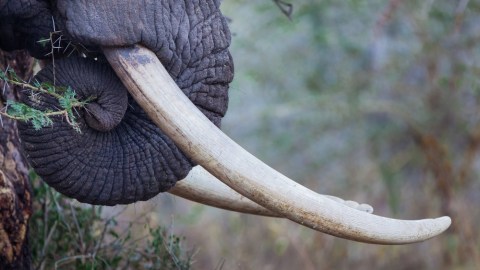Authorities Adopt New Technologies to Fight Illegal Ivory Trade in Togo

What’s the Latest?
Last week, South African newspaper Business Daycovered new measures adopted by the Togolese government in attempts to combat the region’s illegal ivory trade:
To dismantle the smuggling network, the authorities have turned to science. “DNA tests were carried out from February 27 to March 8 on a sample of 200 tusks from the consignment seized in 2013 and 2014 by a local team of specialists supported by experts from Interpol headquarters,” said commissioner Charles Minpame Bolenga, who runs the global law enforcement agency’s bureau in capital Lome.
The tests should allow for the authorities to obtain knowledge regarding the illegal ivory’s origin as well as biological and genetic information about the slain elephants. Authorities plan to share the results of the DNA tests with neighboring countries in order to boost the region’s offensive against smugglers.
The BD article mentions that an estimated 22,000 elephants were killed illegally in 2012 and that the total African population of the world largest land mammal has shrunk from 10 million in 1900 to a paltry 500,000 now.
What’s the Big Idea?
The international elephant ivory trade was made illegal in 1989 by the Convention on International Trade in Endangered Species of Wild Fauna and Flora (CITES, for brevity’s sake). Although the ban can be deemed a relative success, tons of illegal ivory are still traded illegally every year. China, which has become heavily invested in Africa, is a notable culprit. Chinese involvement on the continent presents a risk to native elephant populations and the conservation movements that seek to protect them. That Togo has partnered with Interpol to expand its anti-ivory efforts is a step in the right direction.
Keep reading at Business Day
Photo credit: Jo Crebbin / Shutterstock





